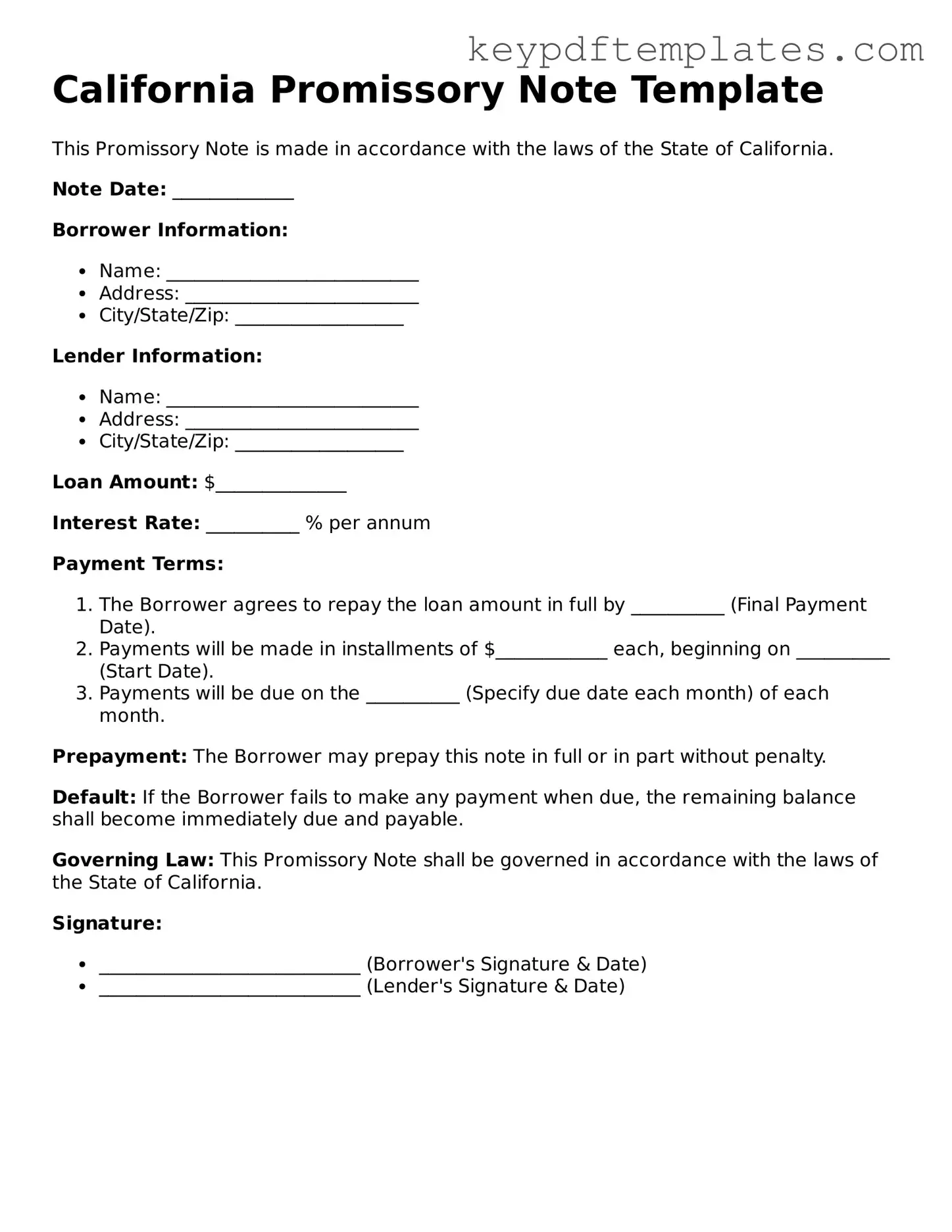Legal Promissory Note Document for the State of California
A California Promissory Note is a written promise to pay a specified amount of money to a lender at a determined time or on demand. This legal document outlines the terms of the loan, including interest rates and repayment schedules. Understanding its components is essential for both borrowers and lenders to ensure clarity and enforceability.
Modify Document Online
